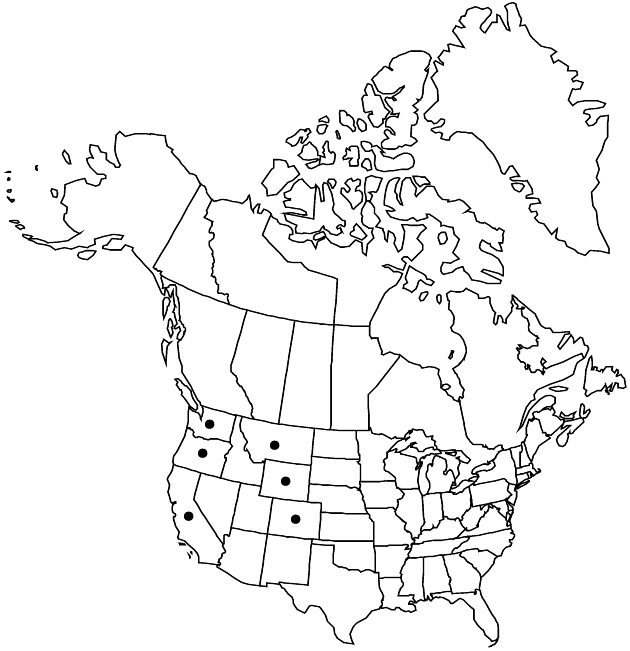Difference between revisions of "Crepis occidentalis subsp. conjuncta"
Publ. Carnegie Inst. Wash. 504: 134, fig. 22a–e. 1938.
FNA>Volume Importer |
FNA>Volume Importer |
||
| Line 46: | Line 46: | ||
|publication year=1938 | |publication year=1938 | ||
|special status= | |special status= | ||
| − | |source xml=https://jpend@bitbucket.org/aafc-mbb/fna-data-curation.git/src/ | + | |source xml=https://jpend@bitbucket.org/aafc-mbb/fna-data-curation.git/src/8f726806613d60c220dc4493de13607dd3150896/coarse_grained_fna_xml/V19-20-21/V19_298.xml |
|tribe=Asteraceae tribe Cichorieae | |tribe=Asteraceae tribe Cichorieae | ||
|genus=Crepis | |genus=Crepis | ||
Revision as of 16:10, 18 September 2019
Plants 5–20 cm. Stems (branched proximally) tomentose (not stipitate-glandular). Leaves 10–18 × 3–4 cm, deeply pinnately lobed (lobed remote, lanceolate or linear, entire or dentate). Heads 2–9. Peduncles tomentulose, eglandular. Phyllaries 8–12, tomentulose, eglandular, often glabrous distally. Florets 12–40. Cypselae dark brown.
Phenology: Flowering Jun–Jul.
Habitat: Ridgetops, black shale hills, volcanic aggregate, gravelly soils
Elevation: 1400–2100 m
Distribution

Calif., Colo., Mont., Oreg., Wash., Wyo.
Discussion
Selected References
None.
Lower Taxa
None.